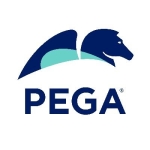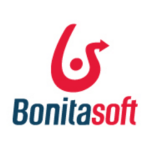ARIS was used to capture current business processes in ARIS EPC through a series of workshops. Level 1-3 VACD, Level 4 EPC (Event-driven Process Chain) and FAD (Function Allocation Diagram), Activities, Roles, Metrics, Risk and Control, RACI, etc.
It was used to operationalize new business processes and also in preparation for a case management system migration to Salesforce. The management, team leader, and staff were trained to read the EPC process model and taught how to navigate ARIS in the production environment.
The selection criteria for ARIS as the preferred BPM was questionable in my opinion.
The main reason it was chosen is that it was on the government "approved" product list.
The solution was too complex/advanced for the organization's requirements and a big team was hired to manage the administration of ARIS and maintain it.
The choice to model the business process in EPC instead of BPMN was made by the organization and no fault of ARIS; ARIS is most certainly capable of modeling in BPMN. There's a lot of time and effort spent to help staff get their head around how to read an EPC in ARIS.
The EPC modeling is very detailed, the semantic check is helpful, and auto-layout simplifies the formatting.
The process interface is valuable for identifying the upstream and downstream processes.
The approval process for the ARIS EPC from the design, staging, and production environment is pretty good. You can obtain feedback on the process model; however, this functionality seems a bit limited by today's standard as some other BPM allows you to comment on the objects within the process model, which makes gathering feedback and making changes easier.
ARIS EPC & FAD features and functionality does not feel like they are not designed for business users. Instead, it feels like they are geared for Process Modelers and Technology users who are focused on System Interface, User Interface, Risk and Control, etc.
Trying to read an EPC in a screen Top-Down while dragging the screen is next to impossible.
The model graphics can be exported in PDF, but the model is too small to read.
In my experience, once the organization creates the process model in ARIS EPC, it will take approximately two years before most organizations ditch any effort to update it. It takes more effort to maintain it than the value that an organization gets out of it.
The requirements for events after the rules, whilst accurate, simply take up too much space and makes the process model difficult to read.
Connecting the upstream and downstream process interface is a pain.
The auto-layout is a great feature but does not work as expected all of the time, as lines appear to overlap and can be confusing to read unless you click on the line to highlight it.
We have been using ARIS BPM for two years.
It's pretty stable, at 95% in my experience. There was the odd occasion when the system was down and it took 48 hours to resolve the issue.
More licenses can be added as the demand grows, it just costs more.
Visio was used initially prior to ARIS. Visio lacked the BPM functionality.
It was implemented through an ARIS vendor and the level of expertise was good.
I would suggest trying at least three vendors and obtain written quotes.
The setup cost and pricing depend on the license (Modeler, Viewer, Administrator).
ARIS was the only government "approved" software that the organization was "allowed" to purchase. This was a questionable decision.
My advice is to try different BPM providers and download the demo for 30/90 days to see if it meets your organization's needs. A basic tool means that you will outgrow it quickly, whereas top-end solutions may be too costly and difficult to implement.


















